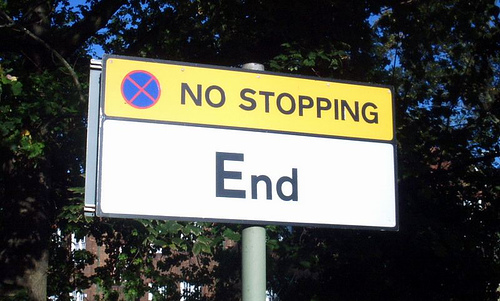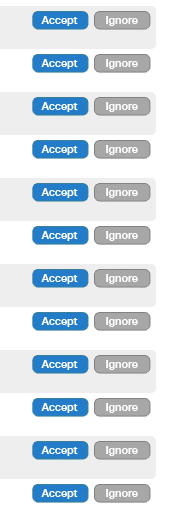 There’s an absolute eruption of activity around location-based services right now. Companies are getting funded left and right, new ones are popping up daily, and certain ones are seemingly starting to take off. But for a number of them, there’s a very big wall looming. And the more popular they get, the quicker they’ll reach it.
There’s an absolute eruption of activity around location-based services right now. Companies are getting funded left and right, new ones are popping up daily, and certain ones are seemingly starting to take off. But for a number of them, there’s a very big wall looming. And the more popular they get, the quicker they’ll reach it.
A few weeks ago, our own Jason Kincaid wrote a post about how Facebook is poised to take over the geolocation space. In it, he makes a number of good points, but there’s one that’s particularly interesting to me. “At most, there are probably a few dozen people who you’d like to share your location with,” he writes. Overall, that’s likely true to a varying degree depending on who you are, but it points to a larger problem I’m starting to notice with these location services: The more people you follow on them, the less useful the service is. This is location’s social paradox.
I’ve written before that location is the missing link between social networks and the real world, and I absolutely believe that’s true. But the way most of these location-based services are built right now, they are becoming an unmanageable mush of finding the location of the people you actually care about. Perhaps the most popular of these networks right now, Foursquare, is a perfect example of this. When I was following 20 people on the service, it was very useful. When I was following 50, it was still useful, but there was some clutter. Now, at around 250 people, I find myself scrolling through my stream just to find certain people that I actually want to know their location. I cannot even imagine what Scoble does with the 1,700+ people he follows.
Of course, this problem is entirely my own fault. If I don’t want to know where someone is, I shouldn’t follow them. But there are two problems with this. First, there are some people that I would like to follow some of the time, like if we’re all in a different city at a conference together. Or maybe if I’m just bored and looking for something to do on a particular night. Second, and more importantly, today’s social networks carry a social pressure to accept many people that request your friendship. Again, of course you don’t have to, but not doing so can often be misconstrued as a slight on that person. Bigger picture: Today’s social networks are predicated on the idea of “more.” The more friends you have on these networks, the more social you are, the better you are at the service, the bigger ego you get, more, more, more. None of that is true, but the perception (as it is with most things in the world) is that more is better.
With these location-based social networks, more is actually worse, and that’s awkward.
There are a number of things that these networks could do to alleviate some of these lesser issues. One would be to create friend groups, like Facebook and now Twitter offer, to filter friends. Another would be to offer a “mute” button, like Brizzly offers for Twitter users that you don’t want to unfollow, but don’t want to see in your stream all the time. But one of Foursquare’s strengths is that it’s very simple right now. It’s all about checking-in to places and seeing a stream of your friends’ check-ins. If you start to add layers to that, you become the mess of rules and settings that Facebook has become.
And because the concept of location-based social networking is still so new and potentially scary to people, I would argue that it’s imperative that Foursquare and these other services do keep it as simple as possible for now.
 Right now, Foursquare actually does two things to try and help with the issue of social overwhelming. First, it shows you only the friends that are in the same city that you are currently in first (it recently added friends in other cities to the bottom of the stream). Second, on the iPhone, it offers Push Notifications on a user-by-user basis. This can be very helpful to tailor location-seeing needs, but it doesn’t alter the app in anyway, and when you visit it, you still see the full stream with everyone. Neither of these solve the social paradox issue.
Right now, Foursquare actually does two things to try and help with the issue of social overwhelming. First, it shows you only the friends that are in the same city that you are currently in first (it recently added friends in other cities to the bottom of the stream). Second, on the iPhone, it offers Push Notifications on a user-by-user basis. This can be very helpful to tailor location-seeing needs, but it doesn’t alter the app in anyway, and when you visit it, you still see the full stream with everyone. Neither of these solve the social paradox issue.
Another service, Gowalla, also has Push Notifications, which are useful. But that service is less built around the friend stream idea, and it’s much worse if you try to use it for that. Not only do see friends who are in other cities in your main stream (with no indication of what city they’re in), but you are forced to see all your pending friend requests at the top of that list. I’m currently scrolling through dozens of them just to get to the main stream. I could either accept or ignore them all, but I don’t want to. Again, social pressure.
In some ways, this is a good problem to have. If users are starting to feel overwhelmed because they have too many friends on your network, it means there are a good number of people actually using it. For most people, Foursquare and Gowalla aren’t there quite yet. But if they keep growing, they will be.
And in some other ways this is reminiscent of Twitter when it was younger. Many users started following a lot of people before feeling overwhelmed by the constant flow of updates from people you might not care about so much. But Twitter evolved rapidly from the “What are you doing?” mundane updates, to be more of a multi-layered broadcast service. It’s hard to imagine these location-based services being able to transform in a way that makes them naturally more compatible with having a large group of people you follow. Remember too that Twitter is an asymmetrical network (you can follow others without them having to follow you), while Foursquare and the like are symmetrical (you have to accept and follow them in return). This will always limit the “socialness” of your service, but it seems to be a requirement giving the privacy implications of location (though another location network, BrightKite, recently moved to be more asymmetric).
Ultimately, I think if these location-based networks are to survive (and not just get taken over as a feature of Facebook), they’re going to have to shift the mentality that all social networks have to have huge, tightly wound social graphs. Facebook used to be of that mindset to a certain extent, but as we’ve all seen recently, they’re trying to extend their social graph in a major way now. The good news is that the business models forming around these networks don’t require your social graph to be huge. But at the same time, it may be difficult to convince people about the vitality of your network if it doesn’t have a ton of inner-site traffic, which is obviously easier to achieve is everyone is friends with one another and clicking on their pages.
Maybe it’s about convincing people that real world “social” is more valuable than social networking “social.” And that the number of friends you have on these networks is increasingly just a useless ego-metric. But it’s a hard sell because deep within our collective psyche, more is always better.
[photo: flickr/arenamontanos]